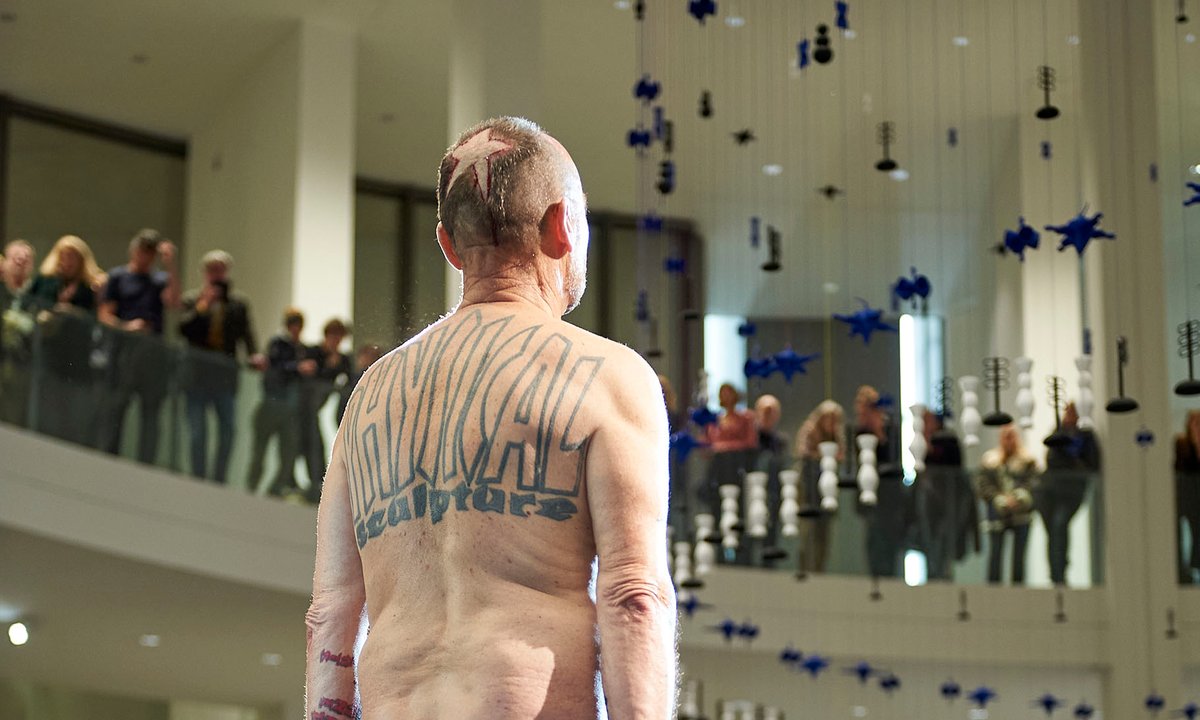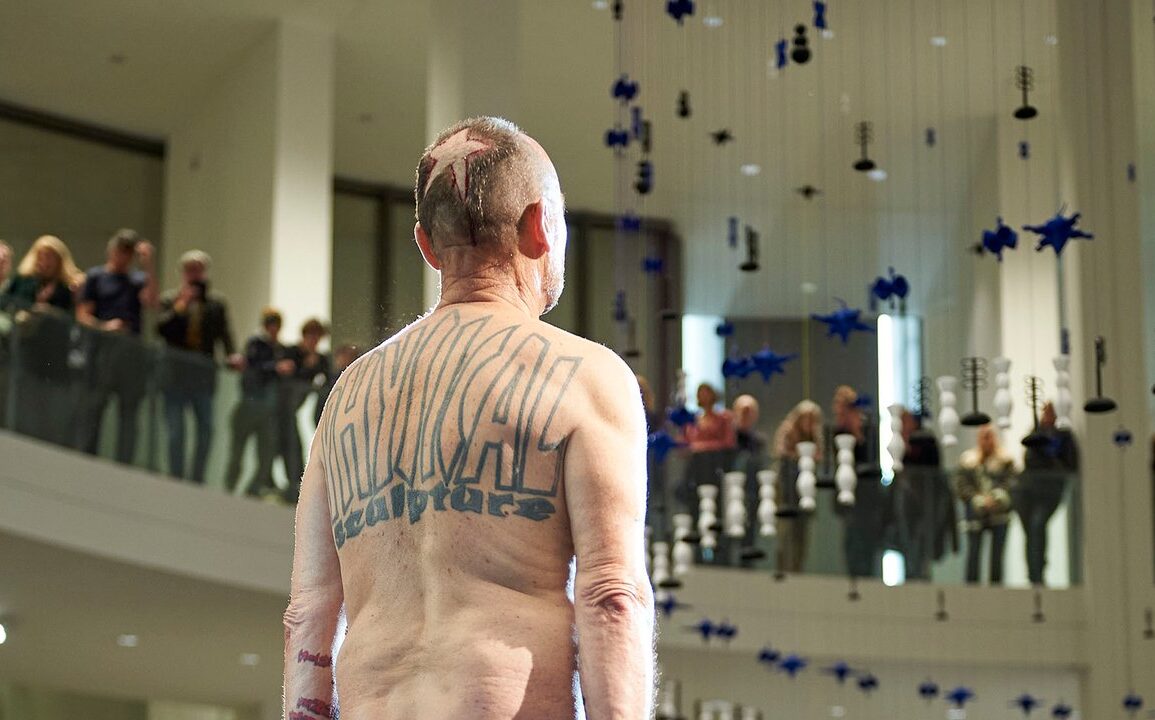
An auction of the tattooed skin of an Austrian performance artist has been cancelled after all 12 pieces were bought by a collector for “a seven-figure sum” ahead of the event. The sale of Wolfgang Flatz’s skin was due to take place at Munich’s modern and contemporary art museum, the Pinakothek der Moderne, on 8 February.
The lots have been purchased by a Swiss collector, who will receive black-and-white photographs of the lots until they are transferred to them posthumously. One remaining piece of tattooed skin will be given to the artist’s son. The tattoos include the artist’s name in Cyrillic and a quote by the Roman philosopher Cicero: “Dum spiro spero” (while I breathe I hope).
The auction, titled “To Risk One’s Own Skin”, was to be led by Christie’s auctioneer and chairman, Dirk Boll. A now-removed page on Christie’s website described how “the auction thus offers a unique opportunity to acquire a significant piece of art history’s future, as this is the first time an artist has sold his real body as a work of art during his lifetime”.
The event was organised as a prelude to the Munich museum’s retrospective of Flatz’s work, Something Wrong with Physical Sculpture, which runs until May 2024 and includes a work that offers visitors the chance to throw darts at his body. An undisclosed portion of the proceeds from the sale will go towards the museum’s Bavarian State Painting Collections and the Flatz Foundation, which was set up by the artist to foster “artistic expression”.
The sale raises some of the ethical and legal challenges related to the production, display and sale of avant-garde artwork, notably the Viennese Actionism movement (spanning the 1960s and 1970s), which Flatz was associated with.
“There will be ethical and cultural sensitivities around the sale of skin, which is human tissue and an organ,” says Xisca Borràs, a partner in the life sciences regulatory team at the UK legal firm Bristows. “The law does not specifically address this practice, despite the efforts of the Council of Europe and the different countries in Europe to stop trafficking in human organs. And whether the artist would be able to give ‘appropriate consent’, given that he/she/they are getting paid for the tattooed skin, is an open legal question.”
Imogen Goold, a professor of medical law at the University of Oxford, agrees that the legal position of such works is tricky: “Most laws cover the use of human tissue in the research context. There is some case law, but it focuses on ownership, rather than sale of human tissue. Surprisingly, quite a few types of human tissue and bodily material are sold. The best example is hair for wigs. There have also been attempts to sell breast milk online. These sorts of sales are probably captured by consumer protection legislation, but the legality of the sale isn’t something the law has really considered. That is probably because sale of things like hair are uncontroversial. By contrast, the attempted sale of breast milk in the UK was rapidly prevented, with eBay taking down the listings.”
The sale of tissue in the art context is “probably untrodden ground, legally speaking” Goold continues. This is not say it hasn’t happened: Marc Quinn’s Self, a sculpture of the artist’s head made from 9 pints of his own frozen blood, sold for £1.5m in 2005, she points out.
It is also not the first time a contemporary artist has brushed with the law on their employment of human tissues and organs directly in the work. Wim Delvoye prompted controversy and allegations of illegality with his tattooing of live pigs in the early 2000s and the Canadian artist Rick Gibson was convicted (under public decency acts) in 1991 for his display of earrings made from foetuses.
Major shows, notably Hauser & Wirth’s 2009 exhibition show Rite of Passage: The Early Years of Vienna Actionism, 1960-1966, curated by the art historian Hubert Klocker (now manager of the Otto Muehl estate), have enhanced understanding of the movement and its ambitions. A new museum, the Wiener Aktionismus Museum (WAM) dedicated to the movement and due to open in Vienna next month, also aims to take this further by, according to its website, making the [Actionism] movement “as accessible to the public in all its complexity”.
This post was originally published on this site be sure to check out more of their content






